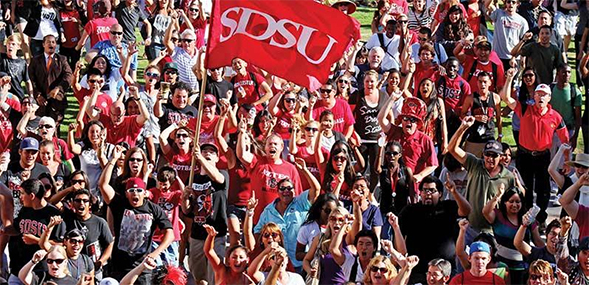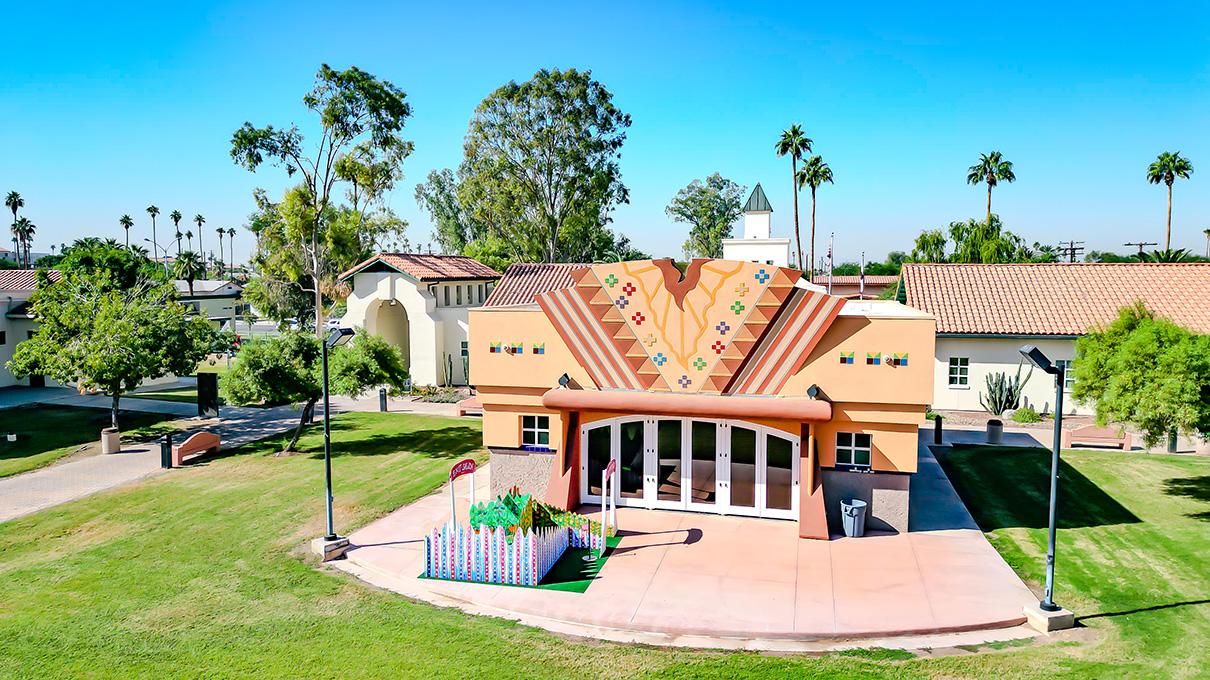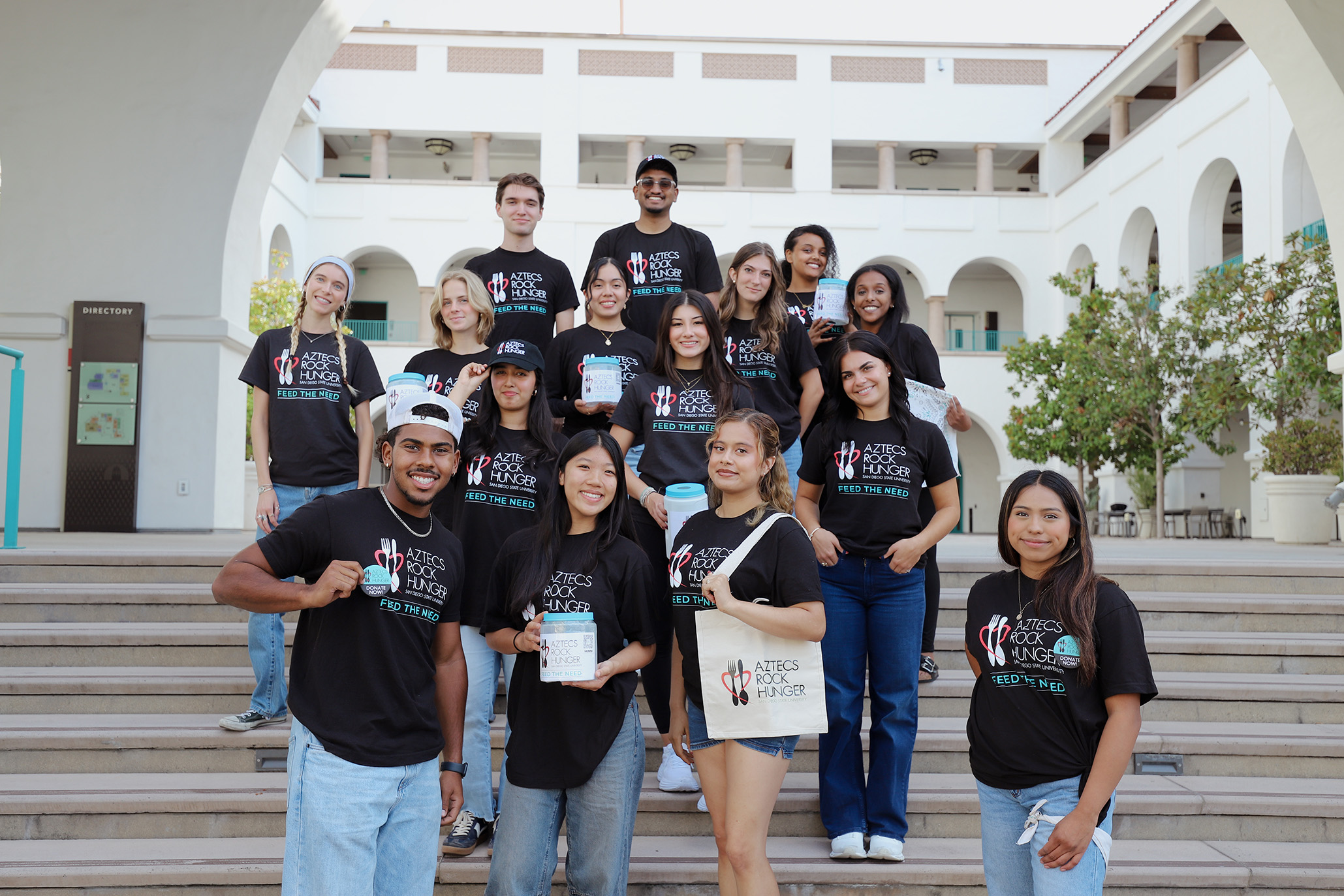A Shift of Focus
The Alumni Associations goal is to expand its reach to 10,000 affinity group members in two years.

In an effort to involve more alumni and increase support for the university, the SDSU Alumni Association has eliminated annual memberships and shifted its outreach structure from chapters to affinity groups.
Alumni leaders hope the move will help build a broader base of engaged alumni by allowing SDSU degree holders to connect with the university in an unlimited number of ways rather than a rigid, formalized structure that some might view as exclusive.
As of the July 1 start of the 2014-15 fiscal year, the Alumni Association stopped renewing its $45 annual memberships. Instead, it encourages alumni to donate any amount each year to the college, department or university initiative of their choice.
"We want you to give to KPBS, to athletics, to a scholarship fund, to whatever club or organization you were in when you were here — whatever you want at San Diego State,” said Jim Herrick, SDSU’s assistant vice president of alumni engagement. “We have to evolve with the times and those times demand a recalibrating of being in sync with the goals of the university.
“This is the trend. It's happening nationally and when it comes right down to it, alumni have a vested interest in advancing the university and that’s what we’re trying to better facilitate.”
Lifetime membership encouraged
Alumni will still be encouraged to join the Alumni Association as lifetime members, of which there are now more than 7,500. Those alumni will still receive the benefits associated with membership including exclusive invitations to special events, discounts from the SDSU Bookstore and other campus partners, prizes, gifts, priority status and the popular lifetime supply of SDSU return address labels.
Shifting the engagement model from chapters to affinity groups is intended to attract alumni who wish to connect with fellow Aztecs in a less formally structured way. Regional chapters such as Orange County, the Greater Los Angeles Area and the Bay Area Aztecs will still be known as chapters and will continue to organize their events around social, cultural and sports gatherings.
Other chapters that have been primarily based on professional networking and career building will be organized as affinity groups or networks such as the Business Alumni Network, which is currently the largest and most active of SDSU’s alumni groups. The Alumni Association will continue its support of these groups based on the levels of interest they generate.
Ready, willing and able
Dion Akers (’08) was hired six months ago as the Alumni Association’s assistant director of alumni affinity groups and volunteerism to help facilitate this transition. He has been meeting and speaking with Aztec alumni throughout the country to gauge reaction to the old and new engagement models.
“There’s a huge community of alumni who feel positive about the university and are ready, willing and able to help fellow alums and support the university and we want to make that easier,” he says. “They were telling us a roadblock to that was the membership requirement and that they’re ready to try something new to bring people together.
“Everyone knows there are SDSU alumni everywhere, so the question was how can we do a better job of connecting them?”
Facilitating vs. gatekeeping
What Akers, Herrick and other alumni staff and board members looked around and saw were social media supplanting many of the traditional functions of alumni associations. Through Facebook, Twitter, Instagram and a host of other platforms, alumni everywhere may now lead or lurk during exchanges of information regarding any institution and its famous alumni, athletic teams, administrators, faculty, staff or any number of related topics.
Alumni associations are no longer needed to function as gatekeepers of participation and information, but rather as facilitators. Change is required and barriers to involvement must be reduced or eliminated if such organizations are to avoid irrelevance.
“Change is difficult for everyone and what we’re doing is new, so there is some concern on the part of those who have always been involved and that’s understandable,” Akers said, “but we feel like we have to try something new to get more alumni involved with the university.”
Herrick says his organization’s job is to keep alumni updated with information relevant to their specific affinity groups. The Alumni Association’s goal is to expand its reach to 10,000 affinity group members in two years.


